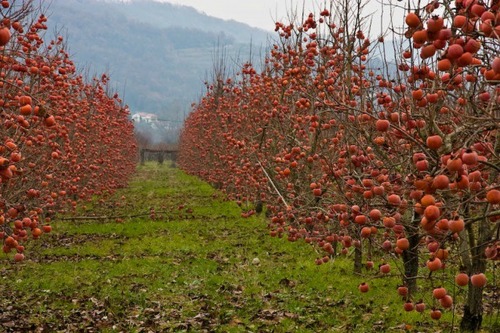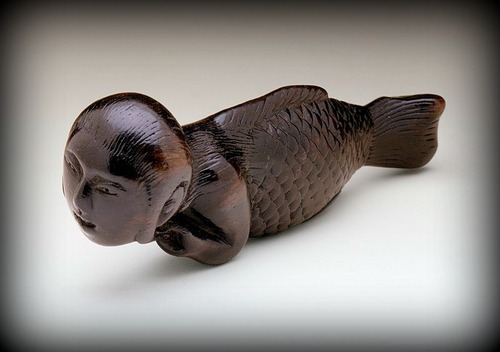American Persimmon : The American Persimmon: An Eager Substitute in Times of Economic Trouble
As mentioned previously, the American Persimmon was an integral part of the diet for many Native Americans in the Eastern United States before European settlers arrived. The fruits, abundant with sugar, were dried and used in persimmon bread and puddings. Explorer Hernando de Soto wrote to his brother in 1694 that the Cherokee Indians offered him Persimmon bread that was “made from medlars and services, and has a very good taste.” Another explorer, Jaques Gravier, commented that the persimmon was “the most delicious fruit that the savages have from Illinois to the sea” after receiving persimmon bread form a Qupaw chief.
Since the arrival of explorers to eastern North America, persimmons have been used for everything from folk songs to beer and buttons. The tree’s ability to grow anywhere and its plentiful fruit make it ideal for food and commodity production. One Decatur newspaper wrote that “The growth of persimmon trees in old fields in the [S]outh has been looked upon as a curse. The persimmon trees will spring up almost like corn.” Because of the tree’s hardiness and almost nuisance-status, the use of the fruits has permeated almost all social and economic boundaries. Used by Native Americans, slaves, and explorers all alike, the tree provided a food and entertainment substitute during economic difficulty.
A common plantation song denotes drinking “’simmon beer” on Christmas, and Millie Evans, a former slave, described several Persimmon recipes she had learned while on the plantation. Highlighted by its integration into cotton field songs, the persimmon’s abundance allowed for all societal classes to enjoy a sweet treat.
In parts of the Confederacy, the beer was called “possum toddy”, recognizing the possum’s penchant for the sweet fruit. The History of the Present State of Virginia noted that the “poorer sort brew their Beer with...Persimmons dried in cakes.”
During the Civil War when there was a trade blockade between the North and South, Persimmon seeds were used as a coffee substitute, and according to a Montgomery Weekly advertisement, the coffee “cannot, even by old and experiences coffee drinkers, be distinguished from genuine coffee.” Confederate soldiers also used the persimmon seeds for buttons on uniforms. In 1709, the persimmon fruits were also used to play a dice game, in which players received points depending on how the fruit landed when thrown.
The American persimmon is a member of the ebony family, making its wood extremely hard and fine-grained. Through slightly brittle, it is useful for materials which place great stress on the wood. In the 1700’s, it was used to make everything from chisel handles and screws to wedges and shafts of carriages (Briand 2005). Scientist John Ewing experimented widely with persimmon wood in 1792, and found the gum extracted from it could be used for preserving old documents. It was also used in the 1800’s to make the heads of golf clubs, and the shuttle blocks of cotton looms.


